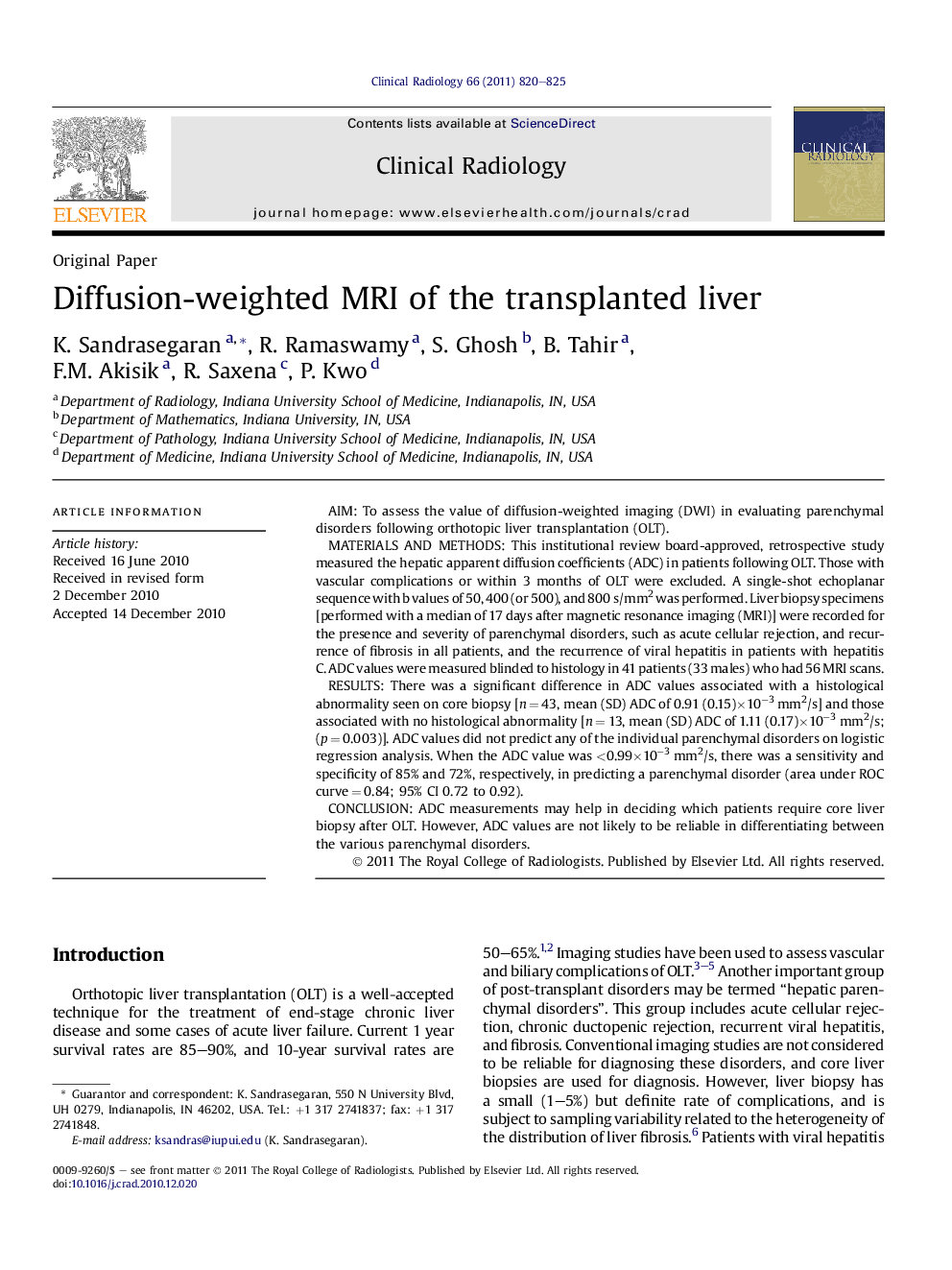| Article ID | Journal | Published Year | Pages | File Type |
|---|---|---|---|---|
| 3982509 | Clinical Radiology | 2011 | 6 Pages |
AimTo assess the value of diffusion-weighted imaging (DWI) in evaluating parenchymal disorders following orthotopic liver transplantation (OLT).Materials and methodsThis institutional review board-approved, retrospective study measured the hepatic apparent diffusion coefficients (ADC) in patients following OLT. Those with vascular complications or within 3 months of OLT were excluded. A single-shot echoplanar sequence with b values of 50, 400 (or 500), and 800 s/mm2 was performed. Liver biopsy specimens [performed with a median of 17 days after magnetic resonance imaging (MRI)] were recorded for the presence and severity of parenchymal disorders, such as acute cellular rejection, and recurrence of fibrosis in all patients, and the recurrence of viral hepatitis in patients with hepatitis C. ADC values were measured blinded to histology in 41 patients (33 males) who had 56 MRI scans.ResultsThere was a significant difference in ADC values associated with a histological abnormality seen on core biopsy [n = 43, mean (SD) ADC of 0.91 (0.15)×10−3 mm2/s] and those associated with no histological abnormality [n = 13, mean (SD) ADC of 1.11 (0.17)×10−3 mm2/s; (p = 0.003)]. ADC values did not predict any of the individual parenchymal disorders on logistic regression analysis. When the ADC value was <0.99×10−3 mm2/s, there was a sensitivity and specificity of 85% and 72%, respectively, in predicting a parenchymal disorder (area under ROC curve = 0.84; 95% CI 0.72 to 0.92).ConclusionADC measurements may help in deciding which patients require core liver biopsy after OLT. However, ADC values are not likely to be reliable in differentiating between the various parenchymal disorders.
